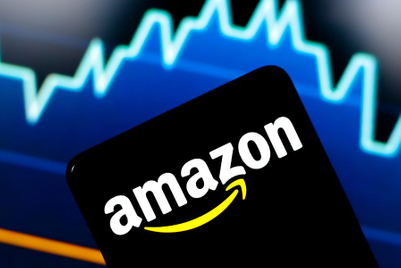.jpg&h=570&w=855&q=100&v=20250320&c=1)
SINGAPORE - AdAsia Holdings has launched CastingAsia, an influencer-marketing platform, across Asia.
CastingAsia will be integrated into the company’s Digital Platform portfolio, allowing marketers to develop, manage, and monitor influencer-marketing campaigns alongside programmatic campaigns for desktop, mobile, and video, be they traded through the company’s network, premium inventory or other ad exchanges.
The company intends to capitalise on the growing social-media population in the region. According to We Are Social, APAC has 1.2 billion active social-media users, and that number will continue to rise as developing markets gain easier access to social-media platforms.
In an interview with Campaign Asia-Pacific, Kosuke Sogo, CEO and co-founder of AdAsia Holdings, said that it is safe to say that influencer marketing will continue to be relevant in the future, and the company aims to connect people, from celebrities and everyday people to brands.
“Consumers are getting smarter in filtering out the less well-thought-out influencer-marketing campaigns, and it is marketing’s imperative to creatively engage influencers and these consumers,” he said. “It is common to come across an influencer in APAC that has a greater follower reach than traditional media channels, and might also be more recognisable than certain celebrities, especially if an influencer has a regional or international reach.”
Sogo noted that influencer marketing should not only be limited to the domain of B2C marketing; it can be used by B2B marketers as well.
“Influencer marketing has traditionally been a standalone facet of marketing, and we’re looking to tie it in with other forms of marketing,” he said. “Influencer engagement does not just end once the marketer draws the final campaign report.”
Sogo reported that a number of clients based in Southeast Asia were looking at more ways to scale their influencer-marketing campaigns through the use of influencer-generated content.
Some common issues faced by marketers today include sifting through disparate influencer information silos, taking a scattergun approach to influencer recruitment and spending too much time on influencer management.
“Through our conversations with agencies, we have noticed that influencer marketing is limited by the lack of available influencer data,” he said.
This prompted the team’s initial look into building a platform that allows marketers to run influencer-marketing campaigns alongside their programmatic advertising initiatives, and use their influencer-generated content and influencers in other marketing efforts.
The platform is intended to bring this data to marketers, providing insights into an influencer’s following across multiple social-media platforms including Facebook, Instagram, Snapchat and YouTube.
Sogo said the platform took three months to develop, through the company's in-house engineering team, and was one of the first extensions planned after the development of the Digital Platform. The launch follows the introduction of two new video products earlier this month.
The company has offices in Singapore and Bangkok today and aims to bring the number of offices in Asia to seven by the end of this year. The team plans to establish offices in India, Malaysia and Philippines in 2017 and tackle the China market in 2018.
Sogo said the target is to hit US$10 million in revenue this year, and US$20 million in 2017.
“In 2018, we’re targeting to hit US$50 million and to get listed,” Sogo said, adding that the company has seen “three times revenue growth in each month” it's been in operations, and is on course to “hit or even exceed” revenue objectives for this year.

Populating the platform
CastingAsia is currently working with a few existing influencer agencies, but ultimately wants to populate the platform with its own influencer network. The intent is to allow anyone and everyone to be an influencer—all a person has to do is create a free profile through the platform and undergo verification.
For example, a housewife who regularly posts her cooking on Instagram and has a following of 200 can be an influencer for an F&B brand whose target audience is home cooks.
“Of course, we can’t just let anyone who has a social-media profile onto the database,” said Sogo. “Influencers on the platform have been verified according to their social-media profiles’ activity, including authenticity of followers, interactions and more.”
AdAsia takes a percentage cut off the client's influencer-marketing budgets placed on the platform. Sogo said this ensures transparency throughout the influencer-marketing process. It also allows marketers to develop scalable influencer-marketing campaigns, managed through a central point or in individual markets.
For example, well-performing influencer-generated content—content that resounds well with a brand’s target audience—can be used to create further engagement through the programmatic placement of this influencer-generated content.
Asked how marketers will be able to build an influencer-generated content inventory, Sogo said one way was to customise the terms and conditions that influencers must read and agree to when joining a campaign. Marketers can also obtain usage rights when influencers upload their content onto CastingAsia.
“Another way is to contact influencers through the platform to gain usage rights,” he added. “Marketers will then be able to upload influencer-generated content onto CastingAsia or AdAsia Digital Platform, and use this content for other marketing efforts.”
CastingAsia will be available to clients along with the AdAsia Digital Platform and rolled out in each new market the company expands into.
Asked about pioneer brands or influencers at launch, Sogo said that the company has kept things under wraps to ensure it has a fully functioning product before entering the market.
“At the same time, we have hired experienced influencer-marketing professionals that work on obtaining influencers with a high following not just in their local markets but across the region as well,” he added.
Sogo said that these influencer-marketing professionals would also be available for strategy consultation, platform troubleshooting and other client-management functions. As of today, the company is in talks with various influencer agencies and celebrity-management groups.
|
KEY FEATURES Recruitment
Management and communication
Monitoring and reporting
|


.jpg&h=334&w=500&q=100&v=20250320&c=1)



.png&h=334&w=500&q=100&v=20250320&c=1)
.png&h=334&w=500&q=100&v=20250320&c=1)


.png&h=334&w=500&q=100&v=20250320&c=1)




.jpg&h=268&w=401&q=100&v=20250320&c=1)
.jpg&h=268&w=401&q=100&v=20250320&c=1)
.png&h=268&w=401&q=100&v=20250320&c=1)
